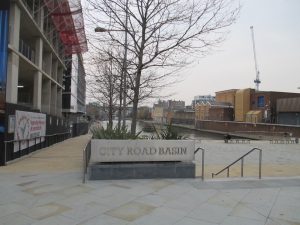I’m reading Ali Smith’s Autumn: a novel (Pantheon Books, 2016). The main character is an art historian (and she’s employed!) But it is really about deep relationships among a few people across a number of decades. This excerpt made me sad, angry, sympathetic, and distressed, because it captures my swath feelings as we start 2018:
Her mother sits down on the churned-up ground near the fence.
I’m tired, she says.
It’s only two miles, Elisabeth says.
That’s not what I mean, she says. I’m tired of the news. I’m tired of the way it makes things spectacular that aren’t, and deals so simplistically with what’s truly appalling. I’m tired of the vitriol. I’m tired of the anger. I’m tired of the meanness. I’m tired of the selfishness. I’m tired of how we’re doing nothing to stop it. I’m tired of how we’re encouraging it. I’m tired of the violence there is and I’m tired of the violence that’s on its way, that’s coming, that hasn’t happened yet. I’m tired of liars. I’m tired of sanctified liars. I’m tired of how those liars have let this happen. I’m tired of having to wonder whether they did it out of stupidity or did it on purpose. I’m tired of lying governments. I’m tired of people not caring whether they’re being lied to any more. I’m tired of being made to feel this fearful. I’m tired of animosity. I’m tired of pusillanimosity.
I don’t think that is actually a word, Elisabeth says.
I’m tired of not knowing the right words, her mother says.
William Safire apparently coined the word ‘pusillanimosity,’ a melding of animosity with being pusillanimous, or timid. Yet, we cannot be tired and we must be courageous. (‘We’ is all my selves that do battle over taking a nap, not showing up, and otherwise settling into my privilege.) There are so many ways to counter the tiredness and resist the lies, the selfishness, the violence, the meanness, and the appalling deeds. And there are lots of courageous people engaged in resisting.

One manifestation of this dogged energy is the film, ‘Dispossession: The Great Social Housing Swindle,’ directed and written by Paul Sng. This film, not yet distributed in the USA (though my library just ordered it!), tells the stories of residents fighting to preserve their communities in London, Glasgow, and Nottingham, featuring interviews with 54 people, many of them long-time occupants of flats that initially were affordable for them and their families. This is only a hasty overview of an excellent film; it deserves broad viewership. The two photos here are not from the film, but ones I took in London.
The film profiles the ‘class cleansing’ occurring across the UK and the ways that legislation and real estate development have created housing crises in many cities since the 1980s. ‘Social housing,’ the term that describes government-supported, decent housing for all—which had a brief reality in the mid-20th century—has been gutted by policies and greed over the last 30 years. At least 1.4 million people are on waiting lists for subsidised flats now, and pressures are only increasing as luxury condos rise on property where ‘regeneration’ is occurring: ‘regeneration’ is the euphemism for tearing down old tower blocks or low-rise estates and not replacing them with housing for those displaced. In addition to the inspiring fights undertaken by the displaced residents (from the now-demolished Heygate Estate in London and Red Road flats in Glasgow, for example) and those insistently staying put (Aylesbury and Cressingham Gardens Estates), the film highlights the varied work of Shelter, Architects for Social Housing (ASH ), and Unite the Union. Scholars, journalists and a number of elected officials also weigh in on the ‘social cleansing’ in process in the last half-century. As Simon Elmer of ASH noted: ‘Gentrification is a gradual process. That’s not what’s happening. It’s not gentrifying the area, it’s clearing its local population out of it.’

The market-driven advice that Savills has provided to the government (this may be a representative report) pinpoints the need for rental housing, but the definition of ‘affordable’ no longer has any meaning; people are spending as much as 70% of their income on rent, if they have housing at all. According to ‘Dispossession,’ the recent government report Fixing Our Broken Housing Market does not move the dial in the direction it needs to go at all (‘market’ in the title indicates the framework); developers and landlords are still calling the shots. Some of their strategies include re-categorising property as ‘brownfields’ so that it can be condemned; if ‘sink estate’ is applied to a housing community—usually perceived as such by outsiders—then what journalist Dawn Foster calls a ‘deliberately ideological phrase’ sticks to that area and dooms the community.
Some artists are complicit too: ‘artwashing’ uses artists and their cooptation via cheap rents to drive up land and housing costs. Other artists, though, have created tremendous responses to the crises, and I only list a few of them here. In 2012, Marcus Coates made the stunning film, Vision Quest: A Ritual for Elephant & Castle, set on the Heygate Estate. Fugitive images created a profoundly moving film in 2015 Estate: A Reverie about Haggerston Estate in Hackney that was demolished. And the indomitable Bristol-based Knowle West Media Centre launched ‘We Can Make…Homes’ in 2016.
Thank you, Paul Sng, Velvet Joy Productions, Lisa McKenzie, and others for your amazing and informative work! Thank you for giving me new energy to counter my tiredness and my pusillanimosity.
